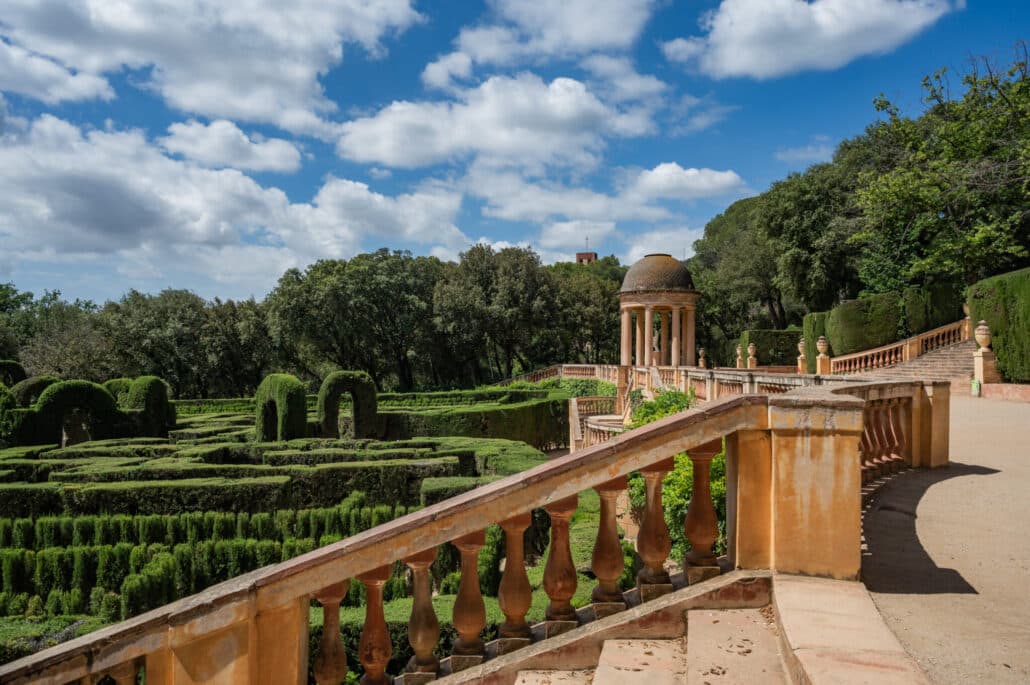The Laberint d’Horta, Barcelona’s oldest historic garden, is preparing for a major transformation. Starting in March 2025, a 12-month renovation project will begin to restore one of the city’s most emblematic green monuments. This intervention, which has a budget of 1.48 million euros, mostly financed by European Next Generation funds, seeks to preserve and enhance both the landscape and the historical value of the plant labyrinth.
 Recovery of the vegetal labyrinth
Recovery of the vegetal labyrinth
The Laberint d’Horta park, which dates back to 1791, is home to the only plant labyrinth in the entire city, a space of more than a kilometer and a half formed by cypress trees that have been part of the identity of the place for decades. This project involves the planting of 2,211 new cypress trees with heights ranging from 150 to 175 centimeters. This change will not only restore the original shape and beauty of the labyrinth, but will also ensure its long-term conservation.
Do not get lost in the labyrinth of Horta in Barcelona.
But the intervention will not be limited to the vegetation. The sculptural structures, ceramics, balustrades and staircases will be restored, returning these pieces to their original splendor. The park’s water system will also be renovated, recovering its circuit and optimizing the use of water resources.
Sustainability at the heart of the project
One of the priorities of this renovation is to improve the sustainability of the park, with special attention to the efficient use of water. A sectorized drip irrigation system will be installed, allowing irrigation to be adjusted according to the specific needs of each area of the park, taking into account orientation, shading and the state of the vegetation. This type of irrigation, in addition to being more sustainable, is ideal for cypress trees, which require water in deep soil layers without the surface remaining constantly wet. The pavement of the labyrinth will also be improved, making it more permeable to facilitate water infiltration into the subsoil. Gravel will be placed in certain areas to maximize this effect, thus helping to conserve soil moisture more efficiently. The plant species to be planted will be native and will have lower water requirements, reducing the environmental impact and ensuring a more rational use of water.
Horta Neighborhood in Barcelona: What to see
A park for everyone
This ambitious project not only aims to preserve history, but also to improve the visitor experience. It seeks to make the labyrinth more accessible, comfortable and safe for all audiences. The recovery of the landscape and historical heritage will allow a clearer reading of the park’s history, which will make the visit more enriching. During the works, which will keep the plant labyrinth closed for an additional 12 months to ensure that the new cypress trees can take root properly, work will also be done to better integrate the labyrinth into the park as a whole. This will highlight the unity of the space and improve the connection with the elements of the territory.
A legacy that is being preserved
The Laberint d’Horta is not just a garden, it is a living monument. In 1994 the last thorough restoration was carried out, and since then it has been managed as a garden museum with controlled access. Now, this new intervention will give continuity to this legacy, in accordance with UNESCO’s recommendations for the protection of historic gardens, as set out in the Florence Charter. The park is listed as a Cultural Asset of Local Interest (BCIL) and is in the process of being declared a Cultural Asset of National Interest (BCIN), which reaffirms its importance both locally and nationally. The Laberint d’Horta has been a silent witness to the passage of time, and its conservation not only involves restoring its paths and plants, but also ensuring that future generations can enjoy its beauty and history.
Looking to the future
With the intervention that will begin in March 2025, the Laberint d’Horta will not only see a renovation in its physical appearance, but will also lay the foundations for a long-term sustainable and careful maintenance plan. The goal is for this emblematic park to not only remain a landmark in Barcelona, but to do so under an environmentally and historically responsible management model. The investment in the renovation of the labyrinth is a commitment to the future, a way of ensuring that this green monument will continue to be part of the life of the city and its visitors for many years to come. At the same time, the project will reinforce its cultural and landscape value, highlighting the importance of preserving the natural heritage in a constantly evolving urban environment.


 Recovery of the vegetal labyrinth
Recovery of the vegetal labyrinth
